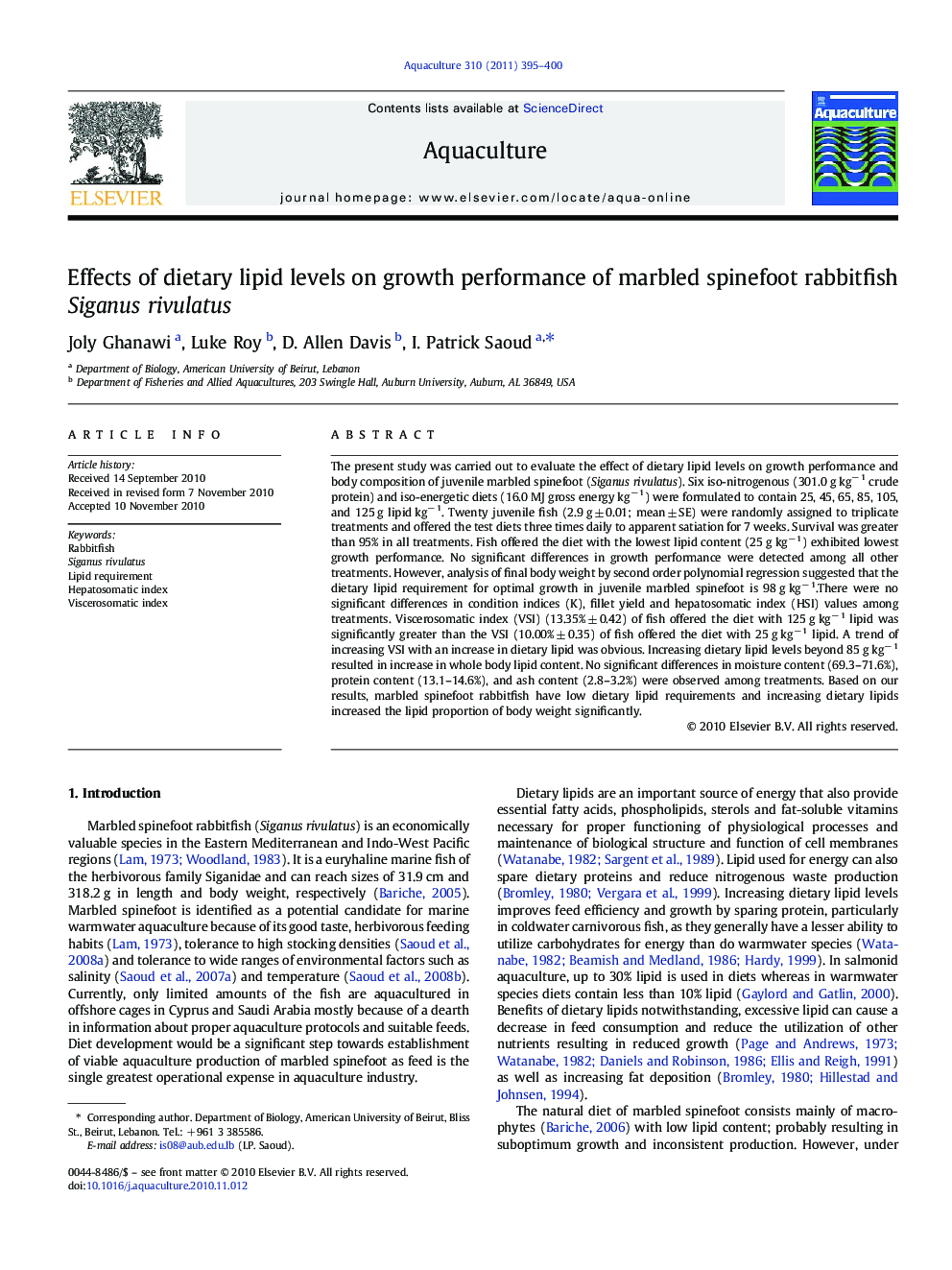| Article ID | Journal | Published Year | Pages | File Type |
|---|---|---|---|---|
| 2423085 | Aquaculture | 2011 | 6 Pages |
The present study was carried out to evaluate the effect of dietary lipid levels on growth performance and body composition of juvenile marbled spinefoot (Siganus rivulatus). Six iso-nitrogenous (301.0 g kg− 1 crude protein) and iso-energetic diets (16.0 MJ gross energy kg− 1) were formulated to contain 25, 45, 65, 85, 105, and 125 g lipid kg− 1. Twenty juvenile fish (2.9 g ± 0.01; mean ± SE) were randomly assigned to triplicate treatments and offered the test diets three times daily to apparent satiation for 7 weeks. Survival was greater than 95% in all treatments. Fish offered the diet with the lowest lipid content (25 g kg− 1) exhibited lowest growth performance. No significant differences in growth performance were detected among all other treatments. However, analysis of final body weight by second order polynomial regression suggested that the dietary lipid requirement for optimal growth in juvenile marbled spinefoot is 98 g kg− 1.There were no significant differences in condition indices (K), fillet yield and hepatosomatic index (HSI) values among treatments. Viscerosomatic index (VSI) (13.35% ± 0.42) of fish offered the diet with 125 g kg− 1 lipid was significantly greater than the VSI (10.00% ± 0.35) of fish offered the diet with 25 g kg− 1 lipid. A trend of increasing VSI with an increase in dietary lipid was obvious. Increasing dietary lipid levels beyond 85 g kg− 1 resulted in increase in whole body lipid content. No significant differences in moisture content (69.3–71.6%), protein content (13.1–14.6%), and ash content (2.8–3.2%) were observed among treatments. Based on our results, marbled spinefoot rabbitfish have low dietary lipid requirements and increasing dietary lipids increased the lipid proportion of body weight significantly.
